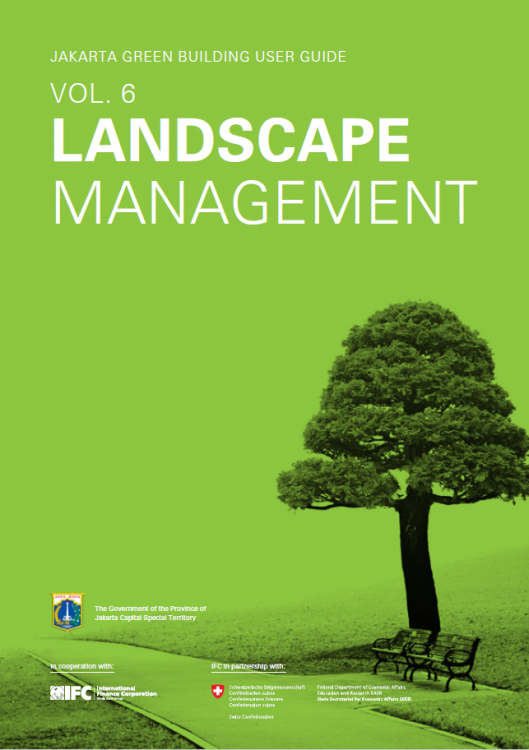Kami menggunakan cookies untuk membuat pengalaman Anda lebih baik. Untuk mematuhi petunjuk e-Pribadi yang baru, kami perlu meminta persetujuan Anda untuk menyetel cookies. Pelajari lebih lanjut .
Jakarta Green Building User Guide : Volume 6 - Landscape Management
Urban green open spaces are essential for social, economic and environmental development of cities. Despite being blessed with rich soil and mild tropical climate that supports vegetation, Jakarta’s per capita green area is only 2.3 m2 , which is one of the lowest among major Asian cities as shown in the graph below.Jakarta’s green open space has alarmingly decreased over the past 50 years. This is reflected in rapidly reducing green open space targets in the government’s masterplans from 37% (1965-85) to 14% (2005-10).In accordance with the national law, the Jakarta government has set itself a target of achieving 30% green open space by 2030. While a part of this will be achieved through creation of parks and green belts, a significant increase in privately owned green open spaces is also needed. The new green building code addresses this issue by mandating a minimum green open area for new construction. The code also requires the use of permeable paving materials to decrease site water run-off.
- Baca | Unduh PDF
- Jakarta Green Building User Guide : Volume 6 - Landscape Management
Urban green open spaces are essential for social, economic and environmental development of cities. Despite being blessed with rich soil and mild tropical climate that supports vegetation, Jakarta’s per capita green area is only 2.3 m2 , which is one of the lowest among major Asian cities as shown in the graph below.Jakarta’s green open space has alarmingly decreased over the past 50 years. This is reflected in rapidly reducing green open space targets in the government’s masterplans from 37% (1965-85) to 14% (2005-10).In accordance with the national law, the Jakarta government has set itself a target of achieving 30% green open space by 2030. While a part of this will be achieved through creation of parks and green belts, a significant increase in privately owned green open spaces is also needed. The new green building code addresses this issue by mandating a minimum green open area for new construction. The code also requires the use of permeable paving materials to decrease site water run-off.

